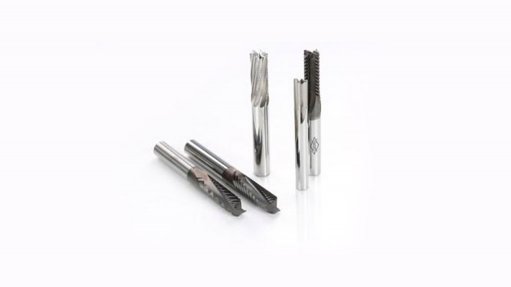
MILLING CUTTERS Mapal's milling cutters aim to partly address the trend towards lightweight contruction
Machine tools solutions provider Mapal has expanded its milling cutter product range to address the industry’s trending preference for lightweight construction. This has resulted in the development of new materials, which have, in turn, created new machining demands.
Mapal aerospace and composites business unit manager Dr Peter Müller-Hummel compiled a report regarding the increased use of lightweight materials and the implications thereof.
“Products of lightweight design, particularly those made of fibre composite materials and multimaterial systems, are becoming increasingly common in the automotive sector, as they spread from their origins in the aerospace industry,” he says.
He adds that lightweight materials have become established in wind energy converters and are increasingly common in machine tools, industrial robots and the consumer sector.
Müller-Hummel notes that tool manufacturers have to adapt because reliable machining is no longer assured with the normal geometries. Thus, Mapal has created a comprehensive range of tools for the reliable machining of modern materials, including four new high-performance milling cutters.
This includes the solid carbide OptiMill-Thermoplastic cutter, which features sharp cutting edges for the reliable machining of thermoplastics, which are widely used in the automotive industry.
“[The OptiMill-Thermoplastic’s] special geometry not only ensures the optimum discharge of chips, but also minimises the build-up of heat during milling,” says Müller-Hummel.
Mapal also offers the OptiMill-Thermoplastic-FR for the machining of special fibre-reinforced thermoplastics, which are predomi- nantly carbon fibres.
The solid carbide-milling cutter is diamond-coated, as carbon fibres are generally abrasive. Müller-Hummel explains that the arrangement of the cutting edges around the circumference allows for the fibres to be cut off cleanly without burr formation.
Moreover, the OptiMill-Composite-UD solid carbide end-milling cutter was added to the milling cutter range to help in the manufacture of parts made from fibre composite materials, such as carbon fibre-reinforced polymer, which are either thin or difficult to machine.
“Owing to its cutting-edge geometry, the OptiMill-Composite-UD achieves a simultaneous pulling and pushing cut with compression, thus preventing delaminations and fibre projections,” says Müller-Hummel. The milling cutter is also diamond-coated to ensure a long tool life.
Meanwhile, Müller-Hummel highlights Mapal’s OptiMill-Honeycomb, which meets the special demands of machining honeycombs. The eight-bladed solid carbide end-milling cutter has extremely sharp cutting edges, a helix angle of 15° and very fine serration.
He explains that lightweight honeycomb structures are generally used for support and reinforcement between the inner and outer skin of aircraft or in the vanes of wind energy converters and that the difficulty when machining this material lies in its comb structure.
However, the new OptiMill-Honeycomb is capable of reliably machining even honeycombs with a variety of outer layers or fillings.
Müller-Hummel concludes that the new milling cutters, OptiMill-Thermoplastic, OptiMill-Thermoplastic-FR, OptiMill-Composite-UD and OptiMill-Honeycomb, are immediately available in a range of dimensions.